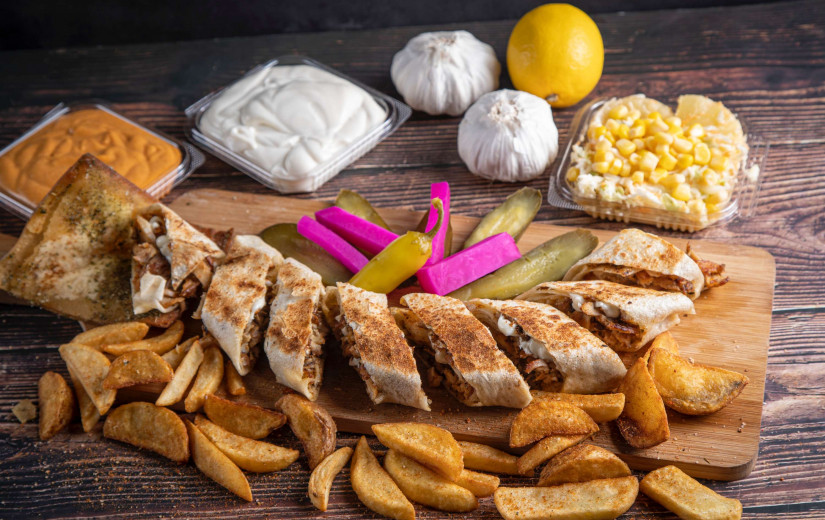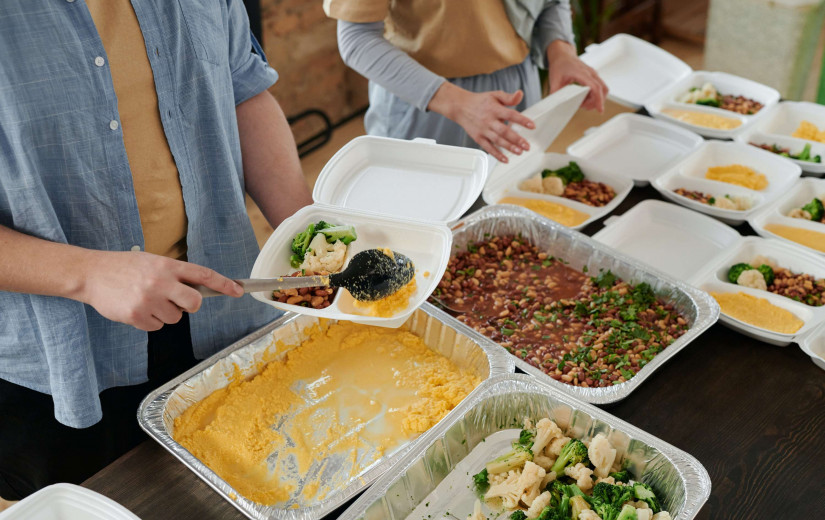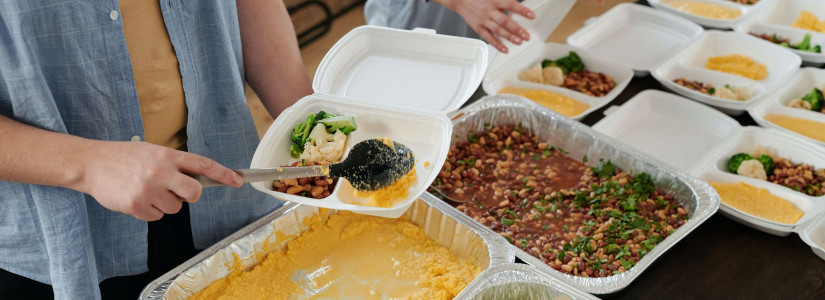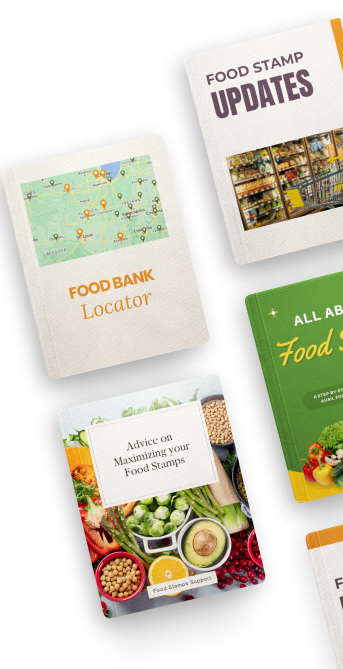SNAP Benefits
Millions of individuals in the United States receive benefits under the Supplemental Nutrition Assistance Program, also known as SNAP. This program was created to help battle hunger across the Nation. SNAP is overseen by the Food and Nutrition Service who coordinates with state and local agencies to make certain that low income individuals are provided an opportunity to quality nutrition.
History of SNAP
The Food Assistance Program first began during the Great Depression. At that time, the Food Assistance Program was named the Federal Surplus Relief Corporation. Orange stamps were made available by the government for purchase by individuals. The orange stamps were the same as the purchaser's average cost of food. Additionally, when an individual purchased the orange stamps, they would receive an additional amount in blue stamps. For example, if they bought ten dollars' worth of orange stamps, they would get five dollars' worth of blue stamps. The orange stamps could be used to purchase any type of food, but the blue stamps had restrictions. The blue stamps could only be used for excess food items such as flour, beans, eggs, vegetables and meal.
The founder of the Federal Surplus Relief Corporation was Secretary of Agriculture Henry Wallace. When President Roosevelt showed his support for this program he dubbed it the New Deal Program. In 1943, the program ended due to the economy rising. President John F. Kennedy revived the program in 1961 to aid the underprivileged people in test states across the United States. President Lyndon Johnson formally accepted the Great Society Program in 1964. It was then called the Food Stamp Act and was funded by the Federal Government. The idea of the SNAP program has been around since 1933, but it has been updated over the years.
Eligibility Requirements
At this moment, there are at least 46 million citizens utilizing the SNAP program. Eligibility requirements for SNAP dictates that an individuals income fall between the amount set within the program guidelines. There are six criterions that must be met in order to be approved. A household cannot have countable resources in excess of $2,250.00. That amount increases to $3,250.00 if the individual is disabled or elderly. An vehicle with a clear title (no liens) can be kept as long as its fair market value is not over $4,650.00.
A family must be able to pass gross and net income tests. Elderly or disabled people only have to meet the gross income test. Elderly is defined as someone over the age of 59. If the applicant is not elderly or disabled, then they have to be between 100-130 percent of the federal poverty guidelines. Alaska and Hawaii have a higher percentage of the poverty guidelines than the rest of the United States.
There is a formula used to determine the amount of SNAP benefits a household can receive. SNAP holders are predicted to spend about 30 percent of their resources on food. An average household of 5 could receive a maximum benefit amount of $549, while a household consisting of one person could receive a maximum amount of $194.
Generally, a person must work in order to be eligible for SNAP. The work requirements consist of registering for work, accepting a job if offered, and going to employment and training programs as provided by the State. Additionally, it is mandatory for adults without dependents to work or engage in a work program for at least 20 hours per week to be able to obtain SNAP benefits for more than 3 months in a 36-month time frame. There are exceptions which may include: children, seniors, pregnant women, and people exempted by their doctor for medical reasons.
How to Obtain SNAP Benefits
Each State has a SNAP office. It is recommended to utilize the online screening tool to see if a household is eligible for benefits. Once the determination is made, the person can either apply online, or go to their local SNAP office and apply for their benefits.
A household with less than $150 a month income may receive expedited benefits. Migrant workers with less than $100 in their bank account may also receive expedited benefits. Otherwise, a family can expect to receive their benefits within 30 days of their application date.
Purchasing Groceries with SNAP
You may use your SNAP benefits at your local stores or Farmers Markets that accept SNAP benefits. Legislation is continuously trying to tighten the food guidelines for SNAP purchases, but at this point, sugary foods and soda can still be bought. All other food items with the exception to hot food can be purchased with SNAP.
There is not a time limit on how long a household can receive SNAP benefits. An able-bodied adult with no dependents can only receive benefits for three months out of three years. This program helps provide food to millions of people across the United States, and without it, many would go hungry.
History of SNAP
The Food Assistance Program first began during the Great Depression. At that time, the Food Assistance Program was named the Federal Surplus Relief Corporation. Orange stamps were made available by the government for purchase by individuals. The orange stamps were the same as the purchaser's average cost of food. Additionally, when an individual purchased the orange stamps, they would receive an additional amount in blue stamps. For example, if they bought ten dollars' worth of orange stamps, they would get five dollars' worth of blue stamps. The orange stamps could be used to purchase any type of food, but the blue stamps had restrictions. The blue stamps could only be used for excess food items such as flour, beans, eggs, vegetables and meal.
The founder of the Federal Surplus Relief Corporation was Secretary of Agriculture Henry Wallace. When President Roosevelt showed his support for this program he dubbed it the New Deal Program. In 1943, the program ended due to the economy rising. President John F. Kennedy revived the program in 1961 to aid the underprivileged people in test states across the United States. President Lyndon Johnson formally accepted the Great Society Program in 1964. It was then called the Food Stamp Act and was funded by the Federal Government. The idea of the SNAP program has been around since 1933, but it has been updated over the years.
Eligibility Requirements
At this moment, there are at least 46 million citizens utilizing the SNAP program. Eligibility requirements for SNAP dictates that an individuals income fall between the amount set within the program guidelines. There are six criterions that must be met in order to be approved. A household cannot have countable resources in excess of $2,250.00. That amount increases to $3,250.00 if the individual is disabled or elderly. An vehicle with a clear title (no liens) can be kept as long as its fair market value is not over $4,650.00.
A family must be able to pass gross and net income tests. Elderly or disabled people only have to meet the gross income test. Elderly is defined as someone over the age of 59. If the applicant is not elderly or disabled, then they have to be between 100-130 percent of the federal poverty guidelines. Alaska and Hawaii have a higher percentage of the poverty guidelines than the rest of the United States.
There is a formula used to determine the amount of SNAP benefits a household can receive. SNAP holders are predicted to spend about 30 percent of their resources on food. An average household of 5 could receive a maximum benefit amount of $549, while a household consisting of one person could receive a maximum amount of $194.
Generally, a person must work in order to be eligible for SNAP. The work requirements consist of registering for work, accepting a job if offered, and going to employment and training programs as provided by the State. Additionally, it is mandatory for adults without dependents to work or engage in a work program for at least 20 hours per week to be able to obtain SNAP benefits for more than 3 months in a 36-month time frame. There are exceptions which may include: children, seniors, pregnant women, and people exempted by their doctor for medical reasons.
How to Obtain SNAP Benefits
Each State has a SNAP office. It is recommended to utilize the online screening tool to see if a household is eligible for benefits. Once the determination is made, the person can either apply online, or go to their local SNAP office and apply for their benefits.
A household with less than $150 a month income may receive expedited benefits. Migrant workers with less than $100 in their bank account may also receive expedited benefits. Otherwise, a family can expect to receive their benefits within 30 days of their application date.
Purchasing Groceries with SNAP
You may use your SNAP benefits at your local stores or Farmers Markets that accept SNAP benefits. Legislation is continuously trying to tighten the food guidelines for SNAP purchases, but at this point, sugary foods and soda can still be bought. All other food items with the exception to hot food can be purchased with SNAP.
There is not a time limit on how long a household can receive SNAP benefits. An able-bodied adult with no dependents can only receive benefits for three months out of three years. This program helps provide food to millions of people across the United States, and without it, many would go hungry.

















